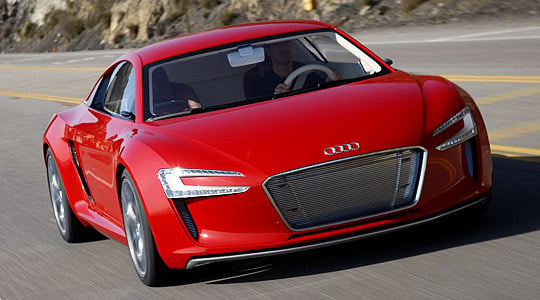
It’s around seven in the morning on the Pacific Coast Highway. The sun rises over the hills and the sea gleams violet. An orange truck disgorges the possible future of the German sportscar. We are about to take our first test drive in the Audi e-tron.
It looks like an Audi R8 but there’s no roaring, bubbling exhaust note. Eerily, one does not hear anything. Someone says: “Look: it’s how the whole future will develop. Perhaps this is something to make an enthusiast forget the Ferrari 458 or, in this part of the world, a Corvette ZR-1.”
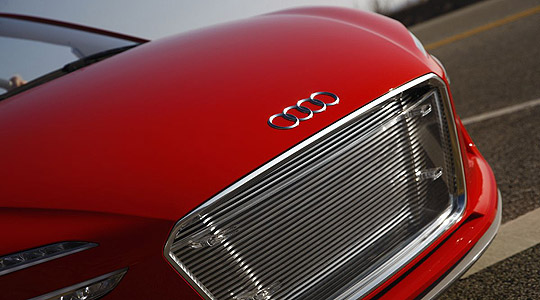
The sun is still rising on the 4.28-metre length of the Audi e-tron, revealing its red lacquer finish and causing the eye to dwell again and again on odd design details. Take the finely drawn face with its different-looking aluminum radiator grille and LED lights. It’s an R8, of course it’s an R8 – yet something about it suggests a new future. There’s an indefinable touch of Transformers, Battlestar Galactica or Darth Vader attracting the senses here.
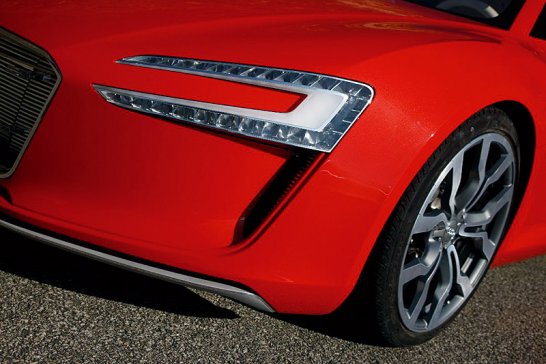
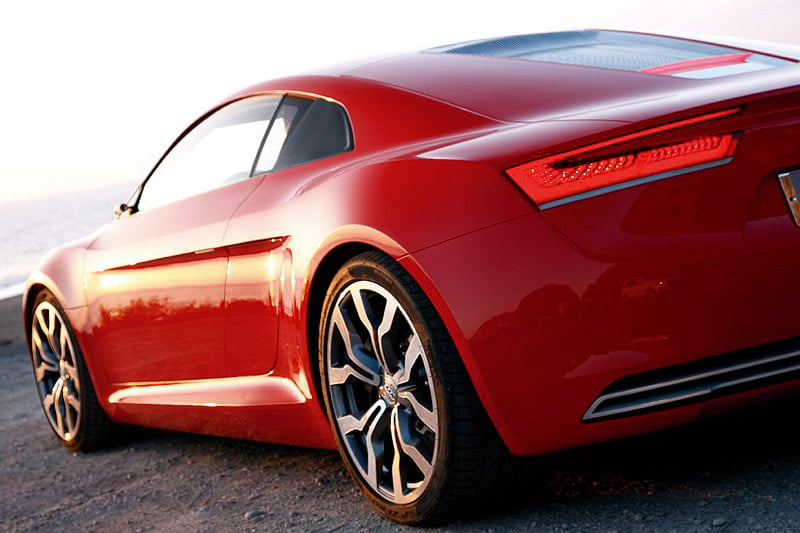
Closer inspection reveals a flap, concealing the charging point with its red and green diodes. The flap itself, plus the doors, the side panels and the roof are all made of fibre-reinforced plastic indicating an ultra-light construction. Every detail suggests a new generation of automobile.
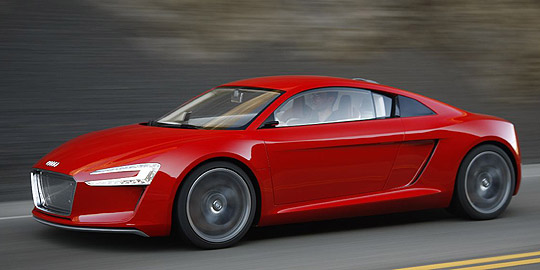
Inside the e-tron there are pedals for brake and power plus, reassuringly, there’s still a nice round steering wheel in there. Clinical instruments and touch-sensitive switches look different, however, and a press on the starter seems to do nothing. Then two round dials light up in the instrument panel and a leather-finished selector lever rises from the central console.
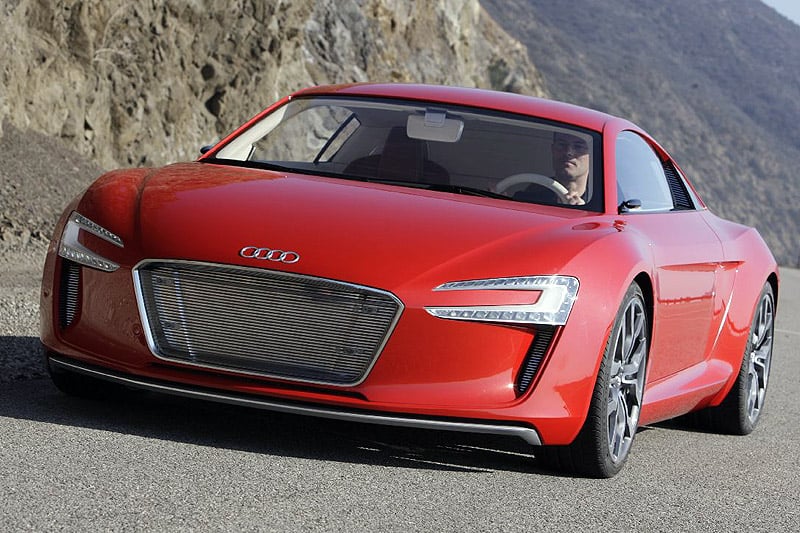
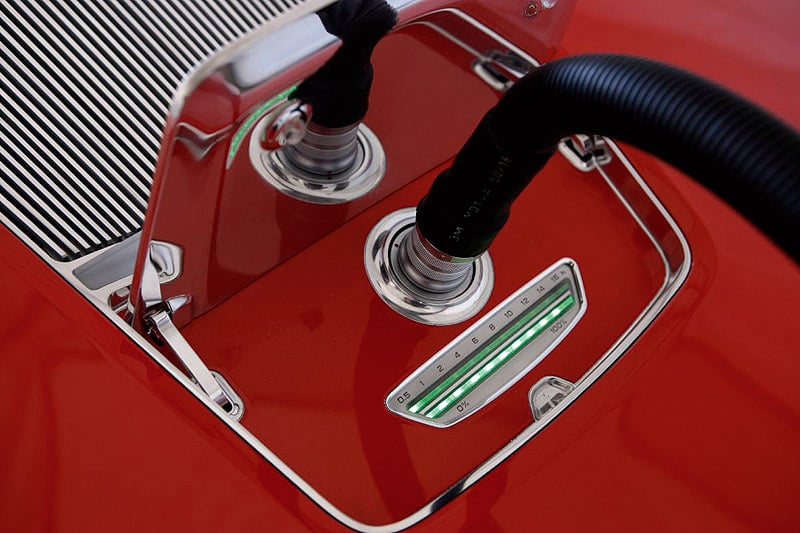
There is merely the sound of the automatic parking brake being released and we are away, heading south on the Pacific Coast Highway. The e-tron sits heavily on the road, this pre-production model weighing two metric tonnes. I am told that the standard model coming later will weigh approximately 1.6 tonnes.
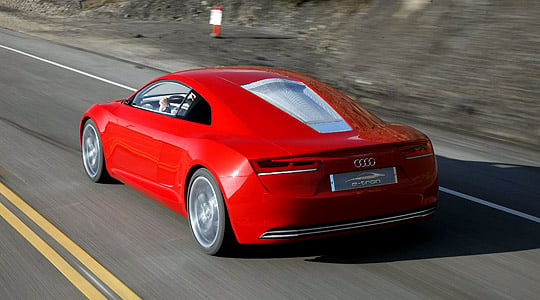
Now we accelerate. There’s the sound of the wind but there’s no growl from the back. Instead, one senses the raw surface of the road as never before. It’s not just the lack of noise which makes it feel quick. It’s the fact that it really is quick – extremely quick, thanks to four electric motors giving a combined 313HP and a torque figure exceeding 4000Nm.
With virtually no sound, full acceleration makes one feel like Captain Future. To spoil the local Sheriff’s day, we knock off the speed dramatically. With combined electric and hydraulic braking force, the pedal feel is different but the stopping power is impressive.
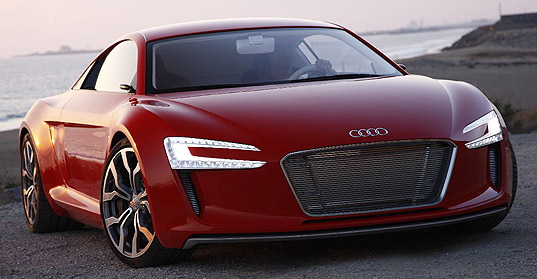
Fully charged, there’s ‘juice’ for approximately one hour’s drive in this car but the standard model will have a realistic range of 240 kilometres, with top speed limited to 200kph (124mph) but 0-62mph in under five seconds. High speeds with electric cars get the batteries on their knees at an alarming rate, hence the restricted top speed. The Sanyo battery module, weighing 470kg and positioned ahead of the rear axle, contributes to a front:rear weight distribution of 42:58. Normal domestic recharging takes a maximum of eight hours but a 400-Volt supply cuts that to 2.5 hours.
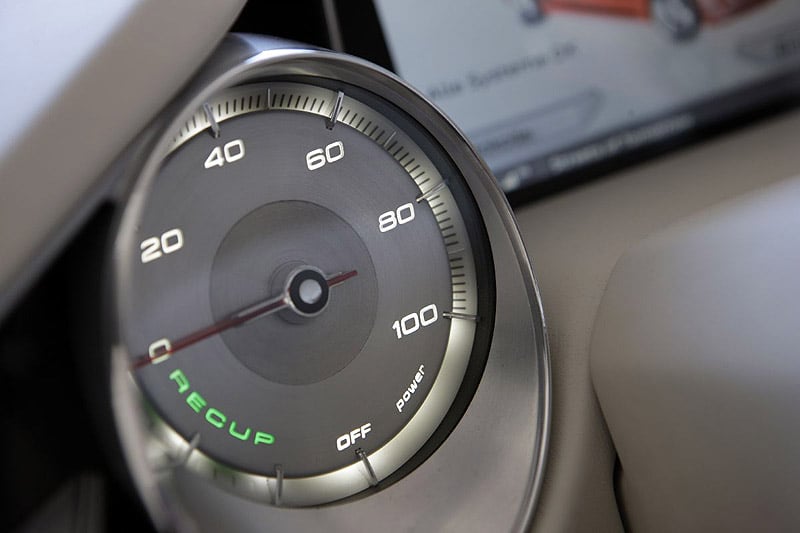
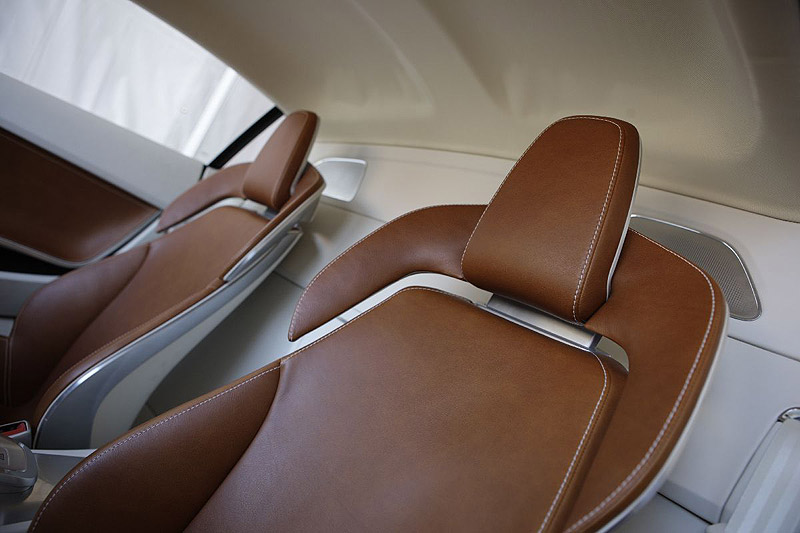
Audi started work on the e-tron in January 2009 and this fully finished prototype is a one-off. At the Los Angeles motor show, a second car will be unveiled and late in 2012, following further extensive tests, a small series of cars will be produced. First there will be 10, then 100 and after that, perhaps 1000 cars. The electrical future seems unstoppable yet sometimes the future develops more slowly than expected. We shall see whether the e-tron bucks that trend.
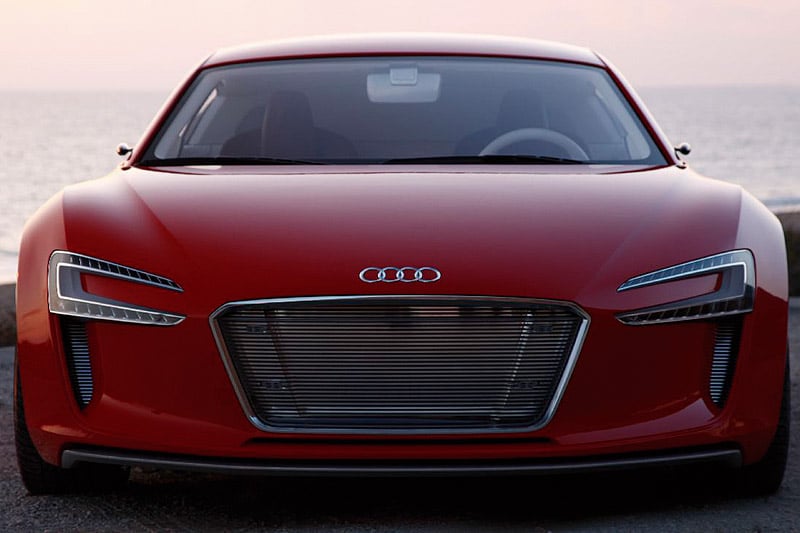
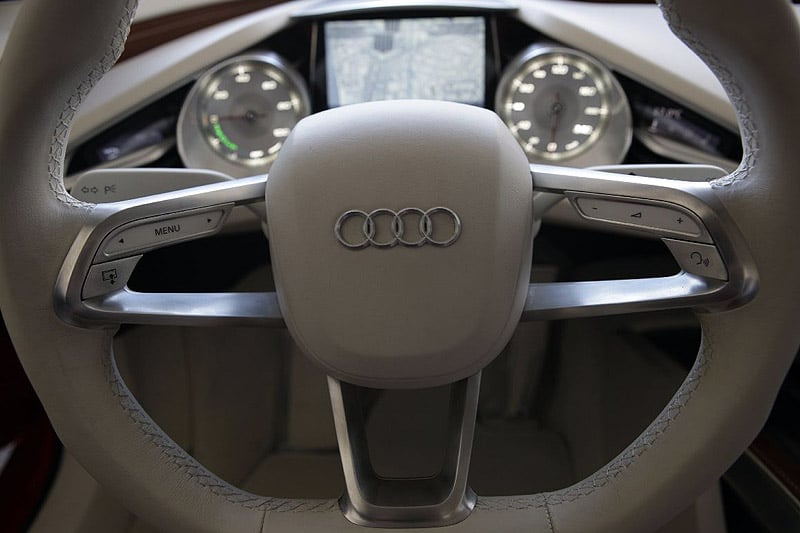
Text: Stefan Grundhoff
Photos: press-inform
ClassicInside - The Classic Driver Newsletter
Free Subscription!













